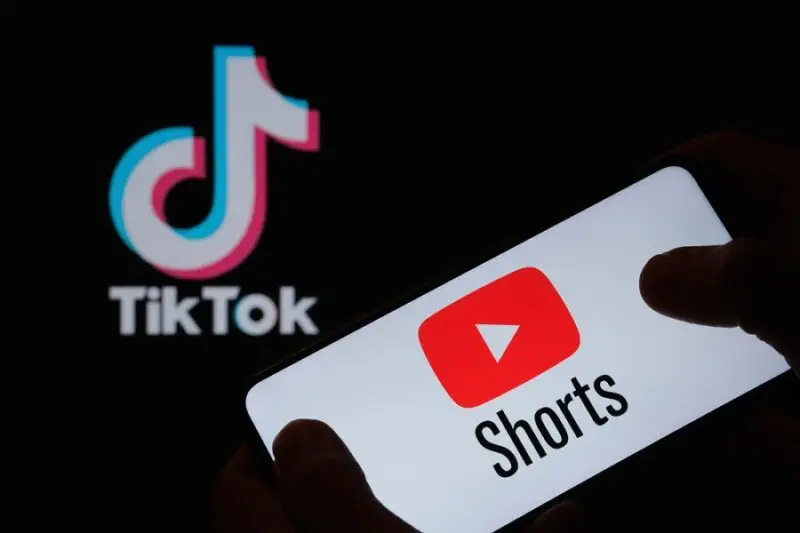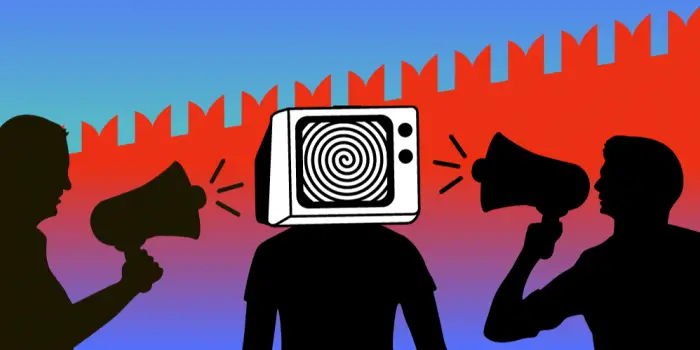Short Videos on TikTok and Reels: Hidden Propaganda Tools to Watch Out For

The popularity of short vertical videos is growing worldwide. Nowadays, these videos are not just about dancing; they also feature bloggers, political news, and propaganda
Short videos like Reels and YouTube Shorts, which initially gained traction on TikTok, are becoming increasingly popular on social media platforms.
TikTok, a Chinese social network, is already used by over a billion people globally. The viral video format, lasting between 15 to 60 seconds, has taken the internet by storm, leading to a rapid rise in the popularity of short videos. This has allowed many users to quickly become famous bloggers with millions of followers. However, due to the short format, emotionally charged content, and broad audience, TikTok has become a fertile ground for the spread of disinformation and propaganda.

Why Propagandists Love These Social Networks
TikTok and Reels are highly conducive to spreading propaganda due to their specific format and mechanisms that captivate users' attention. Firstly, short videos lasting a few seconds to a minute are emotionally intense and can quickly convey simple yet impactful messages. This format leaves no room for deep analysis or critical thinking, making it ideal for spreading simplified or manipulative narratives.
Secondly, TikTok and Reels algorithms favor the rapid spread of videos that evoke strong emotions or controversy. The more a video engages an audience, the more people see it, regardless of the accuracy or correctness of the content. This creates perfect conditions for propaganda materials to go viral.
Thirdly, TikTok and Reels audiences often consist of young people and teenagers, who may be less critical of the information they encounter on these platforms. Additionally, the high pace of content consumption forces users to constantly switch from one video to another, reducing the time for reflection and critical thinking.
All these factors make TikTok and Reels ideal platforms for spreading propaganda, manipulative messages, and disinformation.

The main negative factors of short videos
TikTok and other short video formats are rapidly gaining popularity among users. For example, TikTok’s audience in Ukraine consists of 9.4 million people among the urban population aged 18-55, according to Kyrylo Yezhov, Business Development Director at Kantar Ukraine, in a comment for Forbes.
YouTube Shorts gather about 50 billion views daily, and their audience is almost indistinguishable from those watching longer videos on YouTube. Over 2.5 billion people use the video hosting platform monthly. This statistic does not account for users under 18, although they make up a significant portion of the advertising audience. 36.9% of the world's adult population uses YouTube. If we consider China, where the video hosting is only accessible via VPN, this figure rises to 46.2%. Recent data shows that Reels are 22% more effective than regular video posts on the feed.
As of 2023, Instagram has about 2 billion active users per month, making it the fourth most popular social network in the world. The primary audience of Instagram, like YouTube, consists of people aged 18-34, who make up about 61% of all users.
This impressive statistic underscores the importance of realizing that most users do not come to these platforms for news but for entertainment content, which significantly lowers their level of critical perception compared to those who read news on internet resources.
For example, in russia, TikTok is "protected" from foreign interference: since March 2022, russian users have lost the ability to watch videos from outside the russian federation, according to kremlin requirements. Norwegian journalists confirmed strict localization by comparing TikTok feeds in Belgorod and Kharkiv in April 2022: Belgorod featured jokes and entertainment, while Kharkiv showcased the war and the aftermath of russian shelling.
In contrast, TikTok in Ukraine is not subjected to such strict moderation. On the contrary, the platform often lacks proper protection against russian content. Most russian content appears in humorous videos from professional comedians or amateurs seeking popularity.
One study found 150,000 videos with "neutral" and humorous hashtags that had Ukrainian localization. Hashtags work as keywords, helping TikTok better understand the content of the video and recommend it to the target audience.
Hashtags were deliberately chosen in two languages: Ukrainian and russian, as Ukrainian TikTok is not limited to Ukrainian-language content. In theory, the platform should restrict russian content for Ukrainian users.
The study revealed that instead of discovering what Ukrainians are creating videos about, the platform offers Ukrainians russian humor, including politically charged russian humor. For example, a search query from a Ukrainian account using the hashtag #fun might return a Ukrainian dog video alongside a video from the russian Comedy Club, known for its racist, sexist, and often propagandist content.
The best way to avoid russian videos is to search for jokes in Ukrainian, avoiding similar-sounding russian equivalents, such as the universal hashtag #fun. It’s also wise to refrain from watching any (even apolitical) videos with russian humor, as each view increases the likelihood that such a video will reappear in the feed, possibly with more politically charged content.
In addition to humorous hashtags, russian content often infiltrates Ukrainian search results through hashtags like #украина or #ukraine. Among the unexpected finds were videos from the russian propaganda agency "RIA Novosti", which TikTok labels as a channel controlled by the russian state but still recommends to Ukrainians. It’s worth noting that neither Facebook nor YouTube tolerate such blatant propaganda content and remove it, while the accounts of russian state media are blocked there.
Until 2023, Twitter (now X) provided an effective example of combating russian propaganda: russian state media were shadowbanned, making them inaccessible even with a deliberate search. Their tweets didn’t appear in hashtag search results and could only be found via direct links.
In contrast, on TikTok, russian propagandists not only have official pages but also face no restrictions on appearing in the Ukrainian feed of users interested in "similar" content. This means that TikTok remains the only channel through which russia can broadcast its propaganda to a Ukrainian audience without special tricks.

How to Protect Yourself from This Content:
Be Critical of Content: Pay attention to the sources of information on TikTok and Reels, as these platforms often prioritize videos that evoke strong emotions but do not always adhere to the facts.
Develop Media Literacy: Learn how to distinguish manipulative content from reliable information. Understanding the basic techniques of propaganda will help you navigate the information space more effectively.
Limit Time on Platforms: Excessive consumption of short videos can affect your ability to analyze information deeply. Set boundaries for yourself and try to use these platforms consciously.
Verify Information: If you see a video with controversial or shocking content, always check the information with independent sources before believing it or sharing it with others.
Consider the Context: Short videos can take events out of context, creating a distorted view of reality. Pay attention to what might be omitted or deliberately distorted.
Avoid Emotional Involvement: Propaganda often aims to provoke strong emotions, which lowers critical thinking. By trying to remain emotionally neutral, you can better assess the truthfulness of the content.
Diversify Your Information Sources: Don’t rely solely on one platform or type of content. Watch the news, read analytical materials, and use various media to get a complete picture.
Support Ukrainian Content: Try to watch and share videos from Ukrainian creators. This will help increase the presence of Ukrainian culture and counter russian propaganda.
Educate the Youth: Young people are the most vulnerable to manipulation through TikTok and Reels. Teach them media literacy and critical thinking.
Block Suspicious Content: If you come across propaganda videos, block them and report them to the platform. This will help reduce their spread.
Stick to Online Media: This way, you can see who created the news, check its source, and support independent media with your views.
Find Trustworthy Media and Support Them: Share their content, interact with it (likes, reposts, comments), and, if possible, purchase a subscription or make one-time donations.









